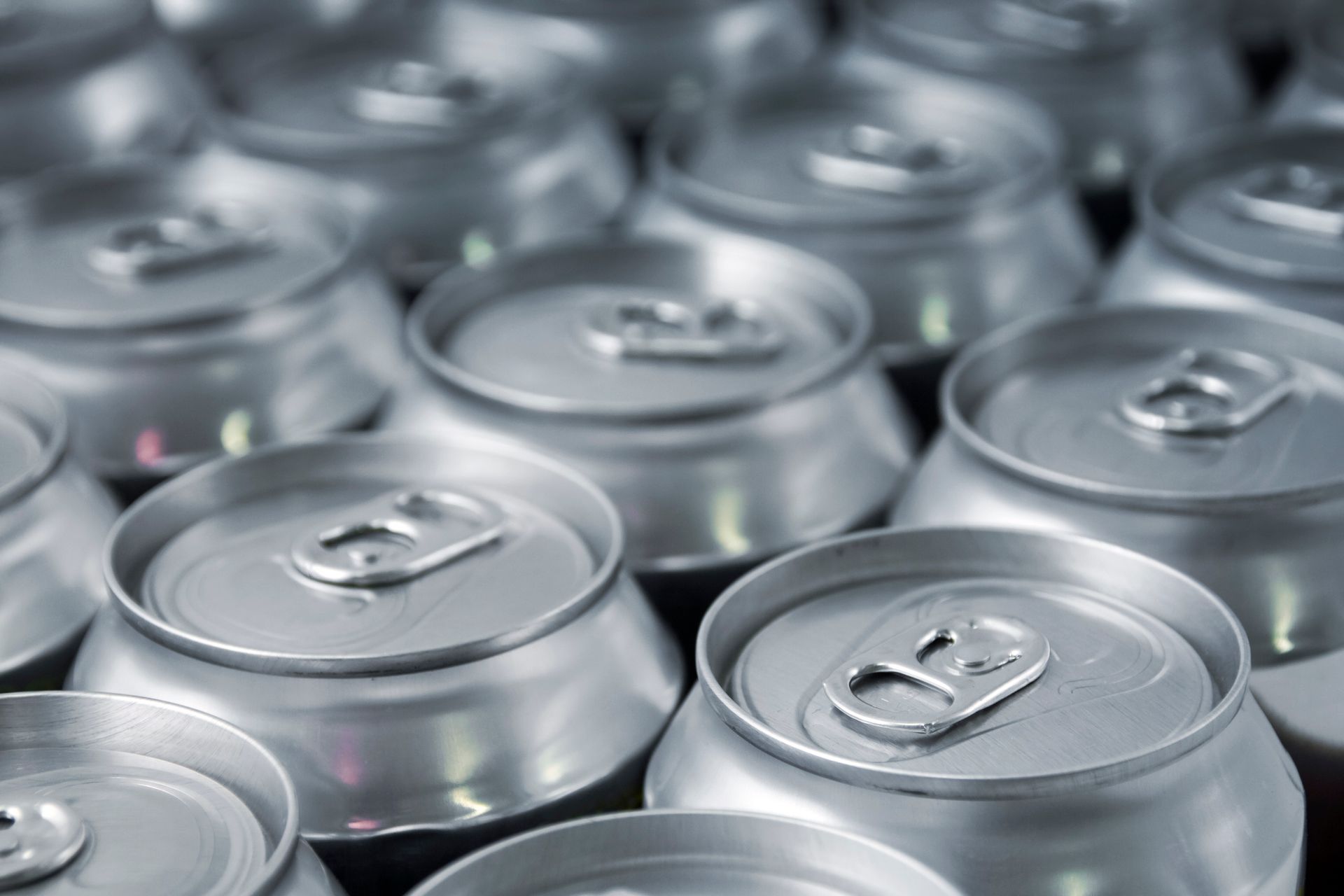The Journey of an Aluminium Can Through Scrap Metal Recycling
Aluminium cans are everywhere — from the drinks we sip to the tinned foods we enjoy. But have you ever wondered what happens to these cans after we toss them into the recycling bin? Aluminium is one of the most recyclable materials, and its journey from waste to a new product is both fascinating and incredibly eco-friendly. Let’s take a deep dive into the lifecycle of an aluminium can, from disposal to its rebirth in scrap metal recycling.

1. The Birth of an Aluminium Can
The life of an aluminium can begins long before it’s filled with your favourite beverage. Bauxite ore, the raw material used to make aluminium, is mined from the earth, processed into alumina, and then smelted into pure aluminium. This aluminium is then rolled into thin sheets to create cans, which are filled, sealed, and distributed.
Once you finish your drink, you play a key role in beginning the can's second life by tossing it into a recycling bin rather than the trash.
2. Collection and Sorting
After you dispose of your aluminium can, it’s collected along with other recyclables by your local waste management service. These materials are transported to a Materials Recovery Facility (MRF), where the real recycling process starts.
At the MRF, the recyclables are sorted based on their type: paper, plastic, glass, and metal. Advanced machinery such as magnetic separators helps differentiate aluminium from steel and other metals. Aluminium, being non-magnetic, is sorted out using specialised equipment, which use magnetic fields to repel the aluminium cans, pushing them into the correct bin.
3. Shredding and Cleaning
Once separated, the aluminium cans are shredded into small pieces. This shredding process increases the surface area, making it easier to melt the metal in the next step.
Before moving on to the melting stage, the aluminium is cleaned to remove any contaminants like labels, adhesives, or food residue. Cleaning ensures that the aluminium being recycled is pure and can be reused without compromising the quality of the end product.
4. Melting and Purification
After the aluminium is shredded and cleaned, it’s transported to a recycling plant, where it is placed into a large furnace and melted at temperatures around 750°C (1,380°F). The molten aluminium is then treated to remove any impurities that might remain.
During this stage, the metal may also be mixed with a small amount of virgin aluminium to maintain strength and quality. Aluminium is highly versatile, and unlike many materials, it doesn’t lose any of its properties during recycling. This makes it one of the most sustainable materials on the planet.
5. Casting and Rolling
Once purified, the molten aluminium is cast into large ingots or blocks, which weigh several tons. These ingots serve as the raw material for producing new aluminium products. The ingots are rolled into thin sheets, similar to the material that was initially used to create the cans. These sheets will eventually be turned into new aluminium cans, as well as other products like foil, car parts, or even airplanes.
6. Rebirth: Back on the Shelves
The newly recycled aluminium sheets are sent to manufacturers who shape them back into cans. This process is impressively fast — it can take as little as 60 days for an aluminium can to go from being tossed into a recycling bin to being recycled, remade, and back on the shelf as a new can.
This closed-loop process can happen repeatedly, as aluminium can be recycled indefinitely without losing its quality or strength.
The Environmental Impact
The aluminium recycling process saves 95% of the energy required to produce aluminium from raw materials. For every ton of aluminium recycled, we save around 14,000 kWh of electricity, equivalent to the amount of energy a typical household uses in a year. Not only does recycling aluminium save energy, but it also conserves natural resources like bauxite and reduces greenhouse gas emissions.
Moreover, since aluminium can be recycled indefinitely, it reduces the need for landfills. This has a positive ripple effect, as it minimises land degradation, conserves ecosystems, and reduces pollution.
Challenges in Aluminium Recycling
While aluminium recycling is incredibly efficient, it still faces a few challenges. One of the biggest hurdles is contamination—food residue, dirt, or mixed materials can disrupt the recycling process and reduce the purity of the aluminium.
Another challenge is that not all aluminium products are equally recyclable. Cans are ideal because they are made from nearly 100% aluminium. However, products like foil, packaging, or certain household items may be lined with other materials that are harder to separate, making the recycling process more complex.
Why Your Participation Matters
The recycling of aluminium cans is a great example of the circular economy, where materials are kept in use for as long as possible. Every time you recycle an aluminium can, you're contributing to a more sustainable future. The can you discard today could be back in your hand as a new product in just a couple of months, saving energy, reducing waste, and conserving natural resources.
So next time you finish a soda or a canned meal, remember that recycling your can is more than just tossing it into a bin — it’s the start of a new journey for a material that never truly dies.
